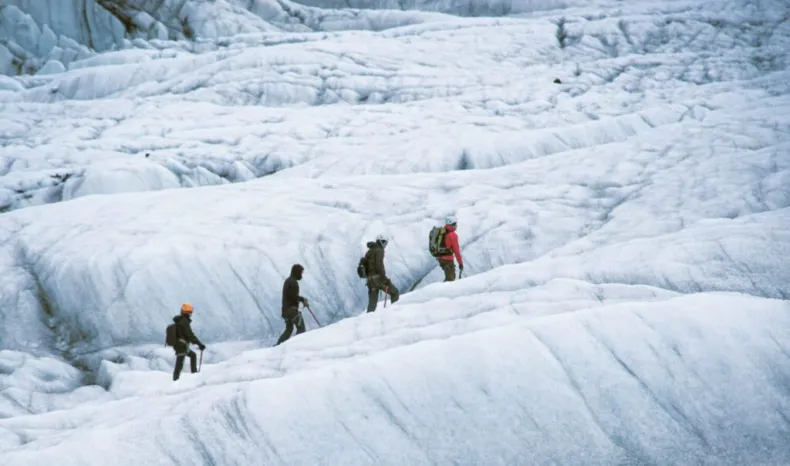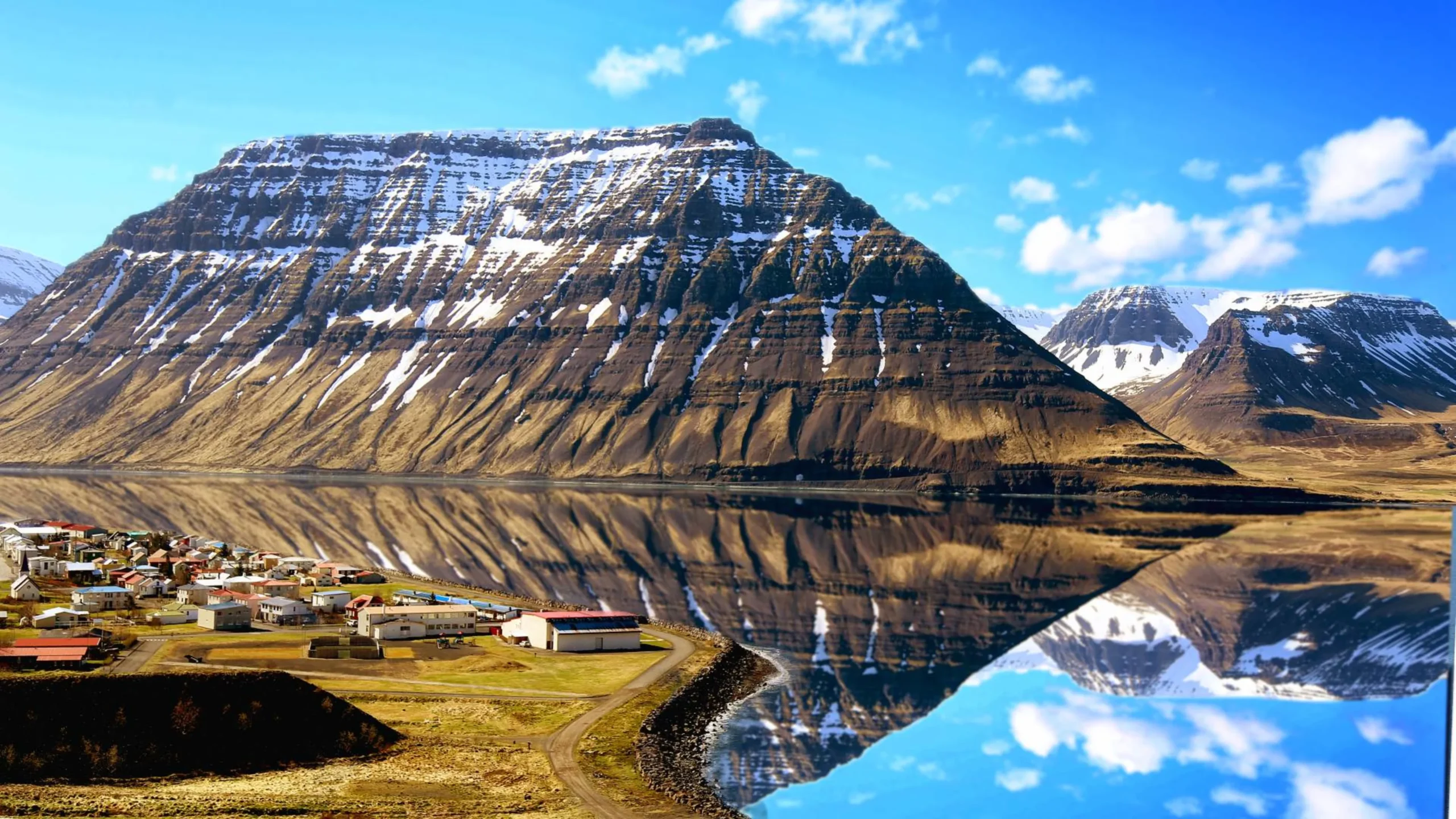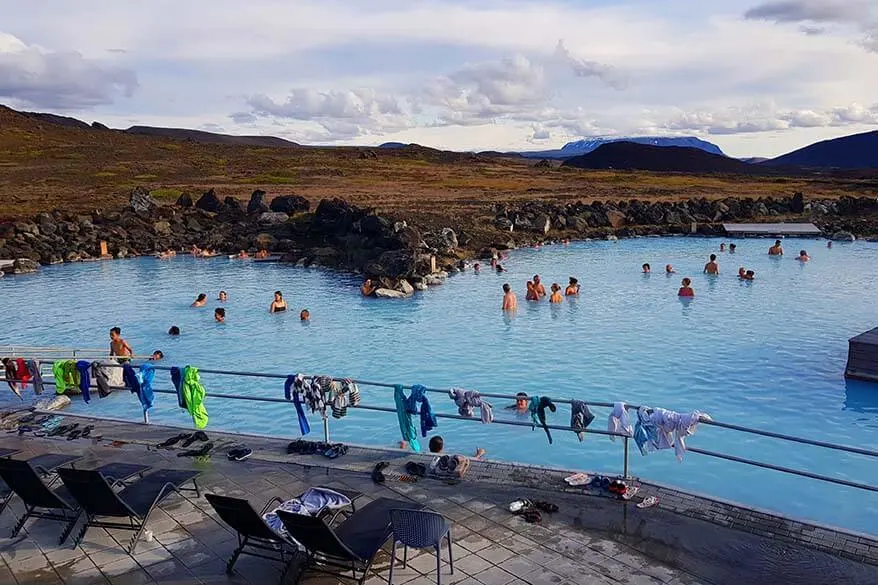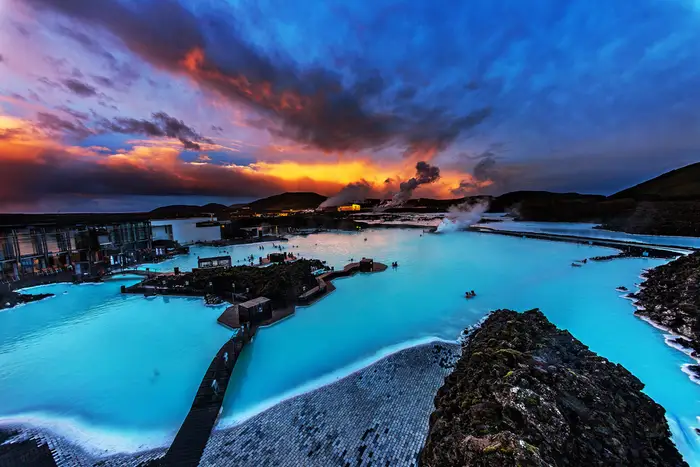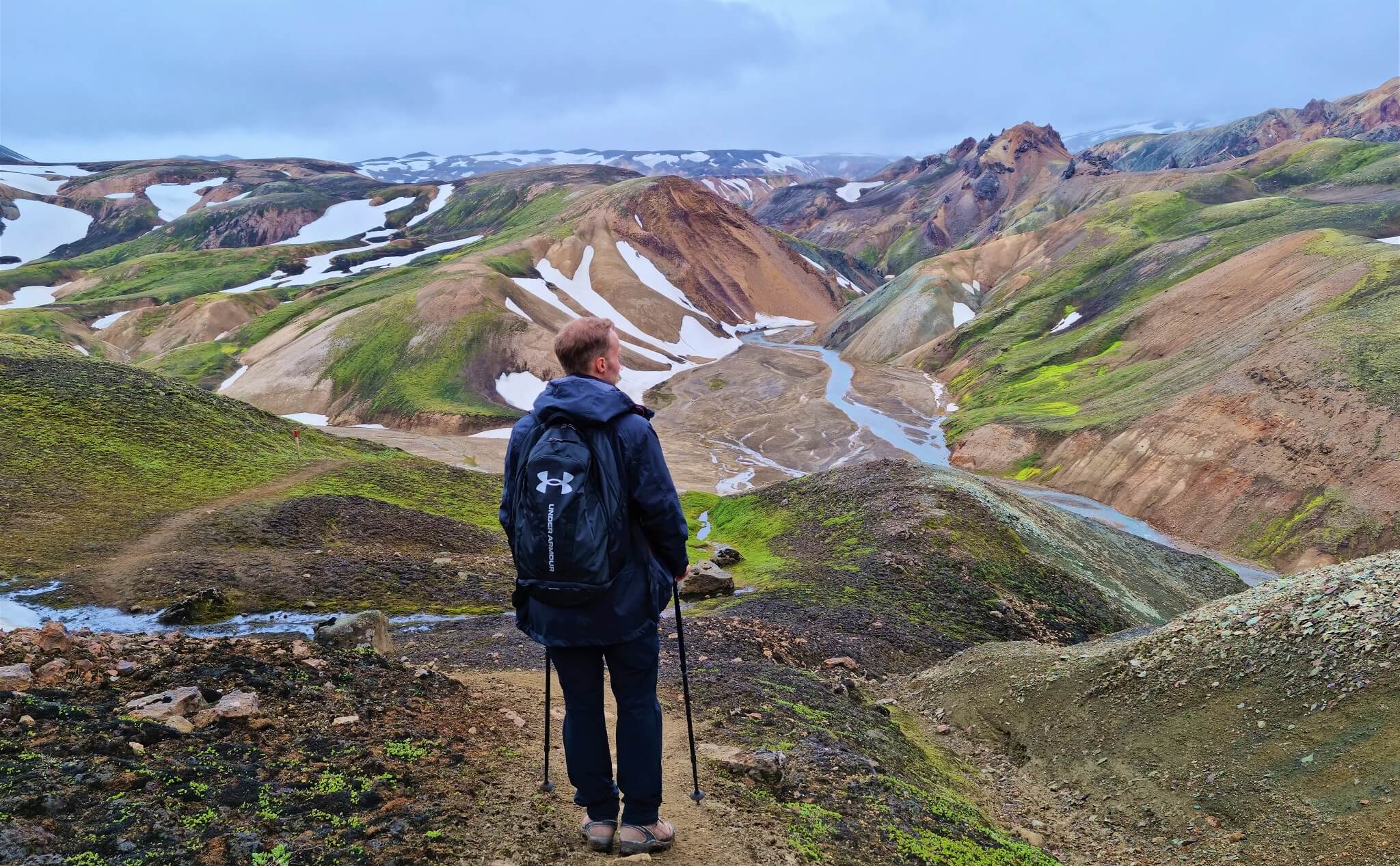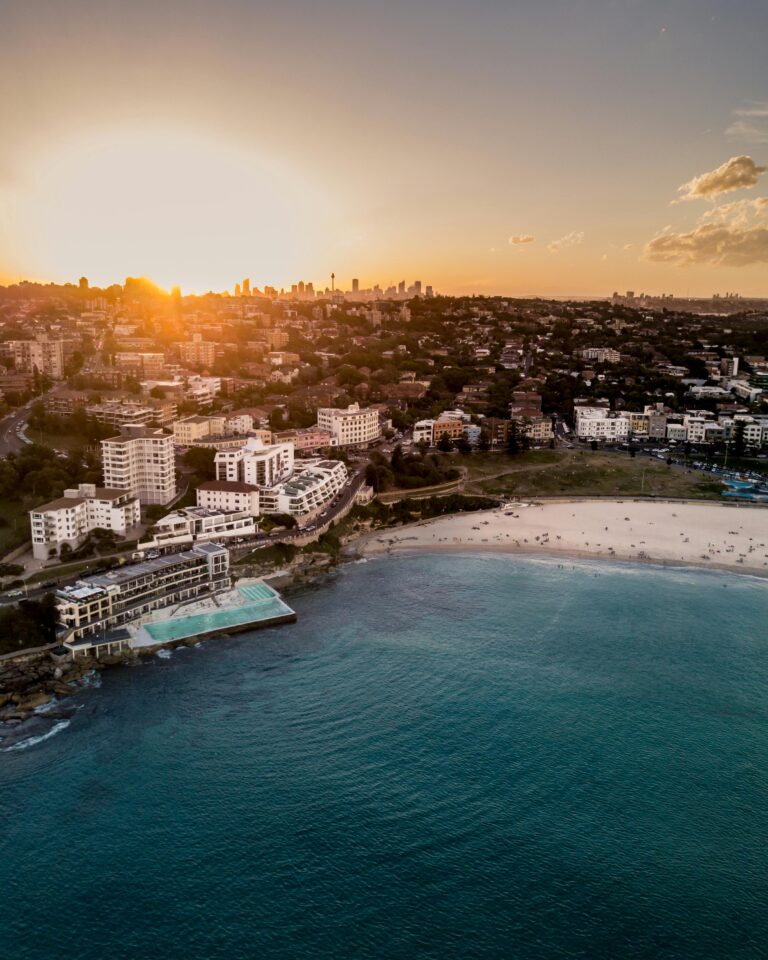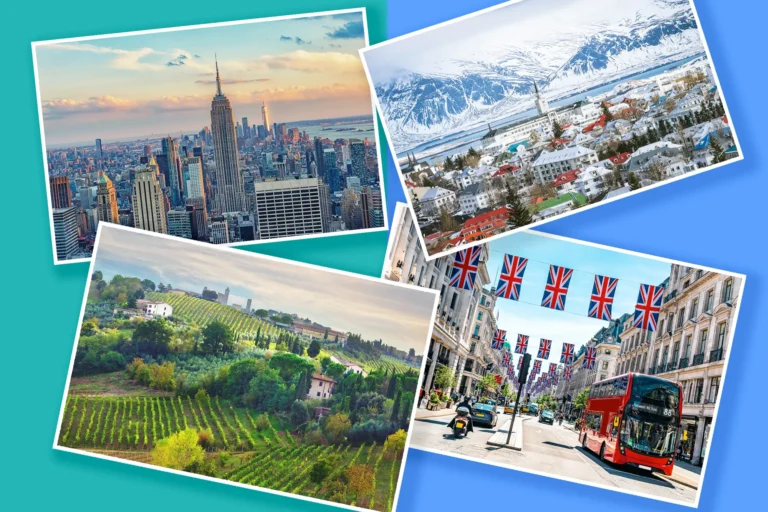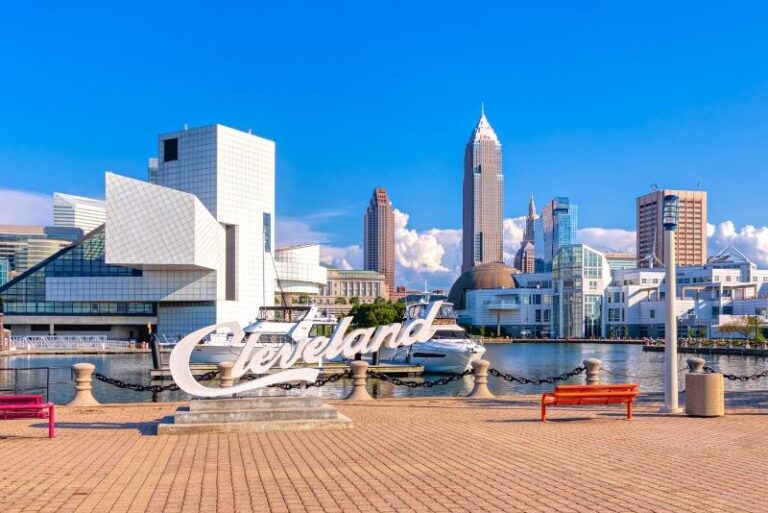Welcome to Iceland, the land of fire and ice! Known for its stunning landscapes, vibrant culture, and unique natural wonders, Iceland is a must-visit destination for any traveler in 2024. Whether you’re an adventure seeker, a nature lover, or someone looking to unwind in serene beauty, Iceland has something special for you. Here are 25 incredible things to do in Iceland that will make your trip unforgettable.
Explore Reykjavik
Reykjavik, the vibrant capital of Iceland, is a delightful blend of modern culture and rich history. Start your exploration by wandering through its colorful streets lined with charming houses and bustling shops. The city’s compact size makes it easy to navigate, allowing you to discover its many attractions on foot.
A must-visit landmark is the Hallgrimskirkja church, one of Reykjavik’s most iconic structures. This towering edifice, inspired by Iceland’s basalt lava flows, offers stunning panoramic views of the city from its observation tower. Inside, you’ll find a serene atmosphere and beautiful pipe organ.
Next, head to Harpa Concert Hall and Conference Centre, an architectural marvel with a striking glass facade that reflects the surrounding harbor and mountains. Harpa hosts numerous cultural events, including concerts, exhibitions, and conferences, making it a hub of Reykjavik’s artistic scene.
For a taste of local culture, visit the Reykjavik Art Museum, which features contemporary Icelandic art across its three locations. The National Museum of Iceland is another excellent stop, offering insights into the country’s history from the Viking era to the present day.
Stroll along Laugavegur, Reykjavik’s main shopping street, where you’ll find an array of boutiques, cafes, and restaurants. It’s the perfect place to pick up unique souvenirs, sample Icelandic cuisine, and immerse yourself in the local vibe.
In the evenings, Reykjavik’s nightlife comes alive. The city is known for its lively bars, clubs, and music venues. Whether you prefer a cozy pub with live music or a trendy club, Reykjavik offers a diverse nightlife scene that caters to all tastes.
Relax in the Blue Lagoon
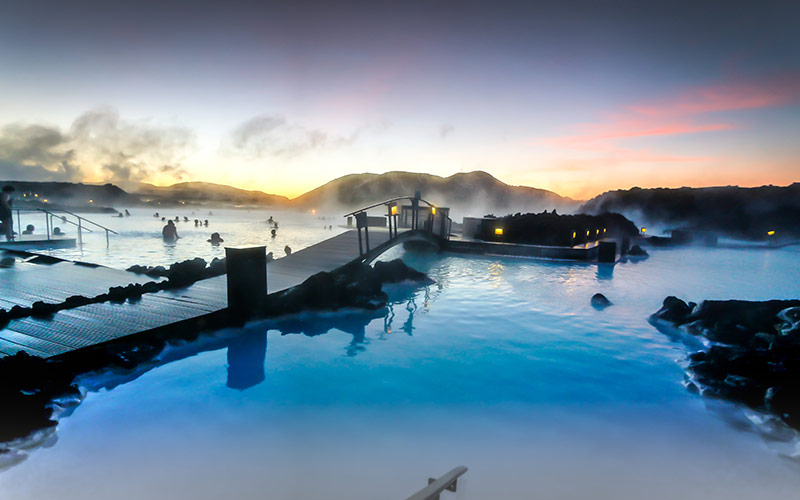
No trip to Iceland is complete without a visit to the Blue Lagoon, one of the country’s most famous attractions. This geothermal spa, located in a lava field in Grindavik on the Reykjanes Peninsula, is renowned for its milky-blue waters rich in minerals like silica and sulfur, known for their beneficial effects on the skin.
The Blue Lagoon provides a luxurious experience in a stunning natural setting. As you immerse yourself in the warm, soothing waters, surrounded by rugged lava rock and steamy mists, you’ll feel your stresses melt away. The water temperature averages between 37-39°C (98-102°F), making it perfect for year-round bathing.
The spa offers a range of amenities to enhance your visit. Indulge in a silica mud mask, which is complimentary and available at mask bars around the lagoon. This natural treatment will leave your skin feeling refreshed and rejuvenated. For a more comprehensive pampering session, book a treatment at the on-site spa, which offers massages and beauty therapies.
Dining at the Blue Lagoon is also a treat. The Lava Restaurant, built into a lava cliff, offers stunning views and a menu featuring fresh, local ingredients. For a more casual option, visit the Blue Café, which serves light snacks and refreshments.
The Blue Lagoon also features a luxurious Retreat Spa and a premium area for those seeking an exclusive experience. Here, you can enjoy private changing rooms, a personal concierge, and access to the Retreat Lagoon and a secluded lounge area.
Visiting the Blue Lagoon is not just about relaxation; it’s also about experiencing one of Iceland’s unique geothermal wonders. Be sure to book your tickets in advance, as this popular attraction can sell out quickly, especially during peak tourist seasons.
In summary, whether you’re soaking in the geothermal waters, enjoying a rejuvenating treatment, or dining with a view, the Blue Lagoon offers a memorable and tranquil experience in the heart of Iceland’s striking landscape.
Discover the Golden Circle
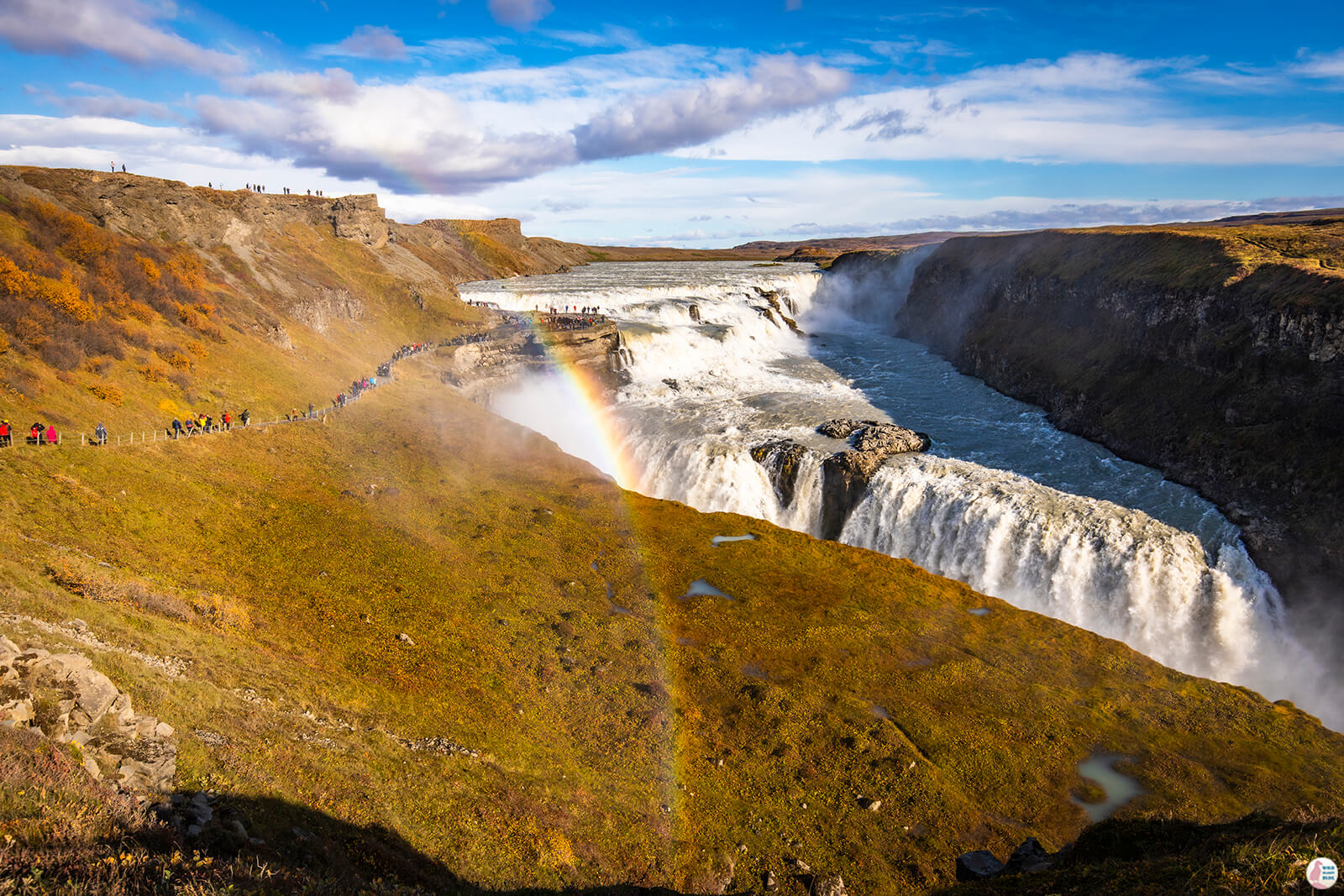
The Golden Circle is one of Iceland’s most popular tourist routes, showcasing some of the country’s most stunning natural attractions within a short drive from Reykjavik. This 300-kilometer loop includes three primary sites: Thingvellir National Park, the Geysir Geothermal Area, and Gullfoss waterfall. Each destination offers unique geological features and breathtaking landscapes.
Thingvellir National Park Begin your Golden Circle journey at Thingvellir National Park, a UNESCO World Heritage site with immense historical and geological significance. Thingvellir is the location of the world’s oldest parliament, the Althing, which was established in 930 AD. Wander through the Almannagjá rift valley, where the Eurasian and North American tectonic plates meet and slowly drift apart, creating a dramatic landscape of fissures and cliffs. The park also offers opportunities for hiking, snorkeling, and diving in the crystal-clear waters of Silfra fissure, known for its remarkable visibility.
Geysir Geothermal Area Next, visit the Geysir Geothermal Area, home to the famous Strokkur geyser, which erupts every 5-10 minutes, shooting hot water up to 30 meters (98 feet) into the air. The area is named after the now mostly dormant Great Geysir, which was the first geyser described in a printed source and gave all other geysers their name. As you explore, you’ll encounter bubbling hot springs, steaming vents, and vibrant mineral deposits, offering a fascinating glimpse into Iceland’s geothermal activity.
Gullfoss Waterfall The final stop on the Golden Circle is Gullfoss, one of Iceland’s most iconic waterfalls. Gullfoss, meaning “Golden Falls,” features a two-tiered cascade that plunges into a rugged canyon, creating a powerful and awe-inspiring spectacle. On sunny days, the mist from the falls often creates beautiful rainbows, adding to the enchantment of the site. There are several viewing platforms to appreciate the falls from different angles, and a well-maintained path allows you to get up close to the roaring water.
The Golden Circle offers a compact yet diverse experience of Iceland’s natural beauty, making it a perfect day trip for travelers seeking to witness some of the country’s most iconic landmarks. Whether you’re marveling at geological wonders, soaking in the history, or enjoying the scenic drives, the Golden Circle promises an unforgettable adventure.
Also Read: Helpful Tips and Budget-Friendly Planning for an Enjoyable Journey to Ooty
Chase the Northern Lights
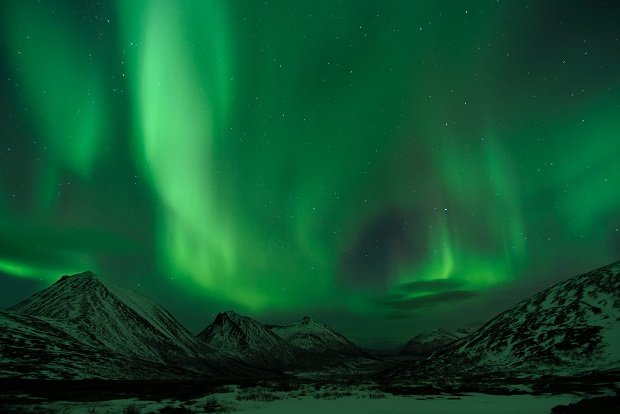
One of the most magical experiences you can have in Iceland is witnessing the Northern Lights, also known as the Aurora Borealis. This natural light display, caused by solar particles interacting with the Earth’s atmosphere, paints the night sky with vibrant hues of green, pink, purple, and blue. From September to April, Iceland offers some of the best opportunities to see this mesmerizing phenomenon.
Best Time to See the Northern Lights The Northern Lights are visible during the darker months, from late September to early April, when the nights are long and skies are clear. The peak viewing period is from October to March, with the greatest chance of sightings occurring between 10 PM and 2 AM.
Optimal Viewing Locations To increase your chances of seeing the Northern Lights, head away from city lights to reduce light pollution. Some of the best places for viewing include:
- Thingvellir National Park: This site offers a dark, clear sky and minimal light pollution, making it a perfect spot for Northern Lights hunting.
- Snaefellsnes Peninsula: Known for its dramatic landscapes and secluded locations, the peninsula provides stunning backdrops for Aurora sightings.
- Reykjanes Peninsula: Close to Reykjavik yet remote enough for clear skies, this area is easily accessible and offers excellent viewing conditions.
- Jokulsarlon Glacier Lagoon: The combination of the Northern Lights reflecting off the icebergs in the lagoon creates a magical and unforgettable scene.
Northern Lights Tours Consider joining a Northern Lights tour led by experienced guides who know the best spots and conditions for viewing. These tours often include transportation, warm clothing, and expert tips for capturing the perfect photos. Some tours even offer additional experiences like hot chocolate or geothermal hot spring visits to enhance your adventure.
Tips for Viewing
- Check the Forecast: Use Northern Lights forecast websites and apps to track solar activity and cloud cover.
- Stay Warm: Icelandic nights can be extremely cold, so dress in warm layers and bring blankets or thermos with hot drinks.
- Be Patient: The Northern Lights can be unpredictable, so be prepared to wait and keep an eye on the sky for several hours.
Chasing the Northern Lights in Iceland is an awe-inspiring experience that should be on every traveler’s bucket list. The ethereal beauty of the dancing lights against Iceland’s rugged landscapes creates a truly magical and unforgettable adventure.
Explore Ice Caves
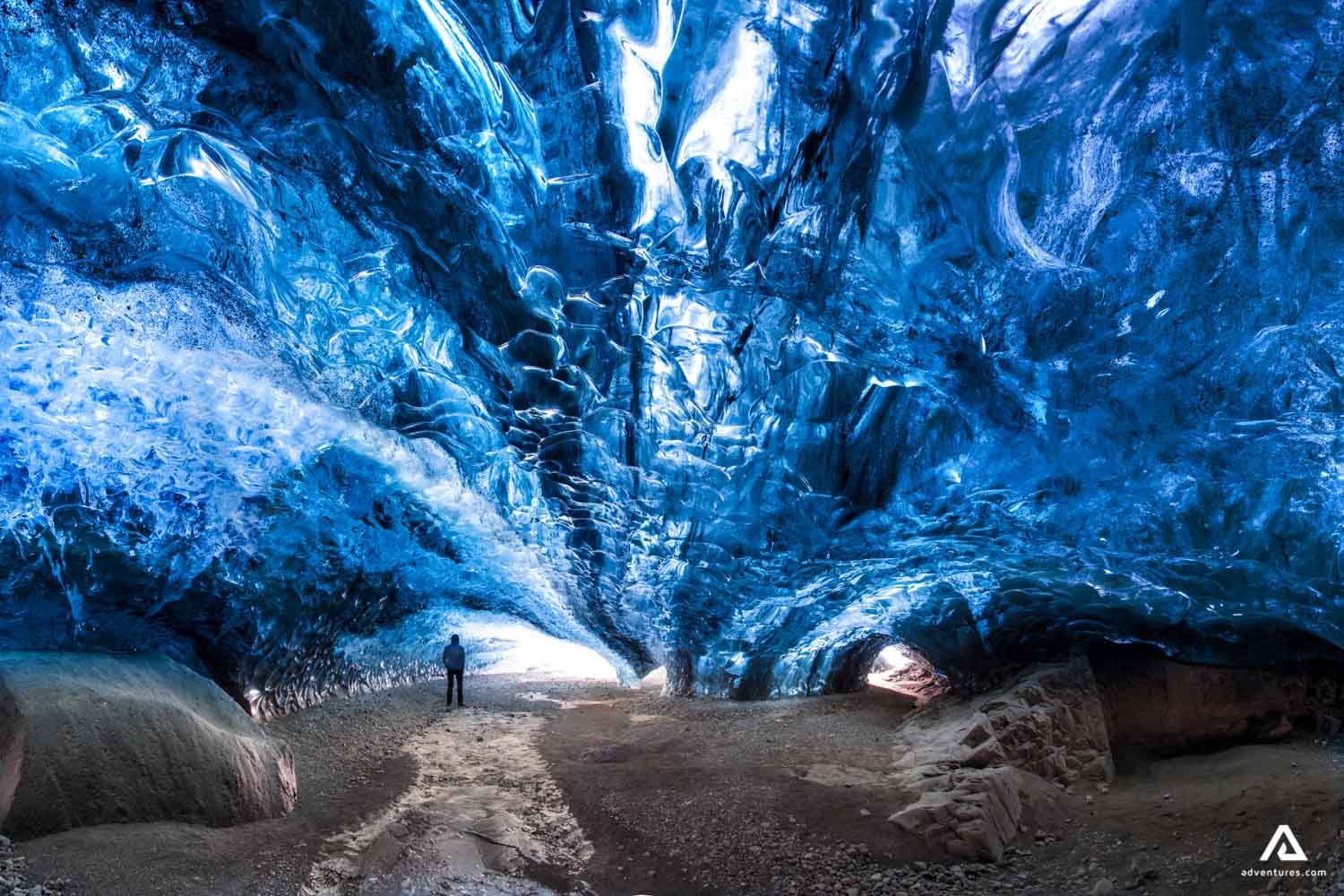
Venturing into Iceland’s ice caves is like stepping into another world, where the beauty of nature is on full display in its most pristine and magical form. These ice caves, primarily located within the vast Vatnajökull Glacier, offer an unforgettable experience for adventurers and nature enthusiasts alike.
The Ice Caves of Vatnajökull Vatnajökull, Europe’s largest glacier, is home to some of the most stunning ice caves in Iceland. These caves are naturally formed by the glacier’s melting and refreezing processes, creating intricate and ever-changing formations. The vivid blue ice, caused by the dense ice absorbing all colors of the spectrum except blue, creates a surreal and enchanting environment.
Best Time to Visit The optimal time to visit the ice caves is during the winter months, from November to March, when the ice is stable enough for exploration. The colder temperatures ensure that the caves are safe and accessible, and the vivid blue hues are at their peak.
Guided Tours Visiting the ice caves requires a guided tour, as navigating the glacier and its caves can be dangerous without expert knowledge. Professional guides provide the necessary safety gear, such as crampons and helmets, and ensure that you have a safe and enjoyable experience. They also share fascinating insights into the glacier’s formation, geology, and the unique features of each cave.
The Crystal Cave One of the most famous ice caves in Vatnajökull is the Crystal Cave. Known for its stunningly clear ice and expansive interior, the Crystal Cave offers a breathtaking view of the glacier’s beauty. The light filtering through the ice creates a mesmerizing effect, making it a favorite spot for photographers and nature lovers.
The Katla Ice Cave Another popular destination is the Katla Ice Cave, located near the Katla volcano under the Myrdalsjökull Glacier. This cave is accessible year-round and features a mix of blue and black ice, with volcanic ash layers adding unique textures and colors to the walls.
Tips for Your Ice Cave Adventure
- Dress Warmly: Wear multiple layers of clothing, including thermal undergarments, waterproof outer layers, gloves, and a warm hat.
- Sturdy Footwear: Hiking boots with good ankle support are essential for navigating the icy terrain.
- Camera: Bring a good camera or smartphone with a low-light setting to capture the stunning interior of the caves.
Exploring Iceland’s ice caves is a once-in-a-lifetime experience that immerses you in the otherworldly beauty of the glacier’s hidden treasures. The combination of shimmering blue ice, fascinating geological formations, and the sense of adventure makes it a highlight of any Icelandic journey.
Also Read: Recommended Holiday Destinations to Explore in March Across India
Visit the South Coast

Iceland’s South Coast is a treasure trove of natural wonders and dramatic landscapes, making it one of the most popular and rewarding regions to explore. From towering waterfalls and black sand beaches to charming villages and glacial lagoons, the South Coast offers a diverse array of sights and experiences that capture the essence of Iceland’s rugged beauty.
Reynisfjara Black Sand Beach Reynisfjara is one of the most famous black sand beaches in the world. Located near the village of Vik, this striking beach is known for its basalt sea stacks, Reynisdrangar, which rise dramatically from the ocean. The beach’s dark sands, powerful waves, and unique rock formations create a surreal and hauntingly beautiful landscape. Be sure to admire the basalt columns and the nearby cave, but exercise caution as the waves can be extremely strong and unpredictable.
Skogafoss Waterfall Skogafoss, one of Iceland’s largest and most iconic waterfalls, is a must-see on the South Coast. This magnificent waterfall, with a drop of 60 meters (197 feet) and a width of 25 meters (82 feet), creates a powerful and awe-inspiring spectacle. On sunny days, you can often see rainbows forming in the mist, adding to the waterfall’s enchanting allure. You can view Skogafoss from the base, where you’ll feel the spray on your face, or climb the stairs to the top for a different perspective and panoramic views of the surrounding landscape.
Seljalandsfoss Waterfall Seljalandsfoss is another spectacular waterfall on the South Coast, unique for its ability to be viewed from behind. A path leads behind the falls, allowing visitors to walk behind the cascading water and experience the waterfall from a truly unique angle. The views from behind the curtain of water, especially at sunset, are magical and offer fantastic photo opportunities.
The Village of Vik Vik, the southernmost village in Iceland, is a charming and picturesque destination known for its dramatic coastal scenery and friendly atmosphere. The village is surrounded by stunning landscapes, including the Reynisfjara black sand beach and the towering cliffs of Dyrhólaey. Visit the quaint church on the hill for panoramic views of Vik and its surroundings.
Jokulsarlon Glacier Lagoon Further along the South Coast, you’ll find the mesmerizing Jokulsarlon Glacier Lagoon. This glacial lagoon is filled with floating icebergs that have calved from the nearby Breiðamerkurjökull Glacier. The icebergs, ranging in size and color from white to striking blue, drift serenely in the lagoon, creating a tranquil and otherworldly scene. Nearby, Diamond Beach is a stretch of black sand where icebergs wash ashore, creating a beautiful contrast between the sparkling ice and dark sands.
Tips for Exploring the South Coast
- Allow Plenty of Time: There’s so much to see and do along the South Coast, so plan to spend at least a couple of days exploring the region.
- Weather Preparedness: Iceland’s weather can be unpredictable, so dress in layers and be prepared for changing conditions.
- Respect Nature: The South Coast’s natural beauty is fragile, so follow local guidelines and stay on marked paths to preserve the environment.
The South Coast of Iceland offers a stunning array of natural attractions that showcase the country’s unique and diverse landscapes. From the dramatic beauty of black sand beaches and powerful waterfalls to charming villages and glacial wonders, the South Coast promises an unforgettable Icelandic adventure.
Take a Whale Watching Tour
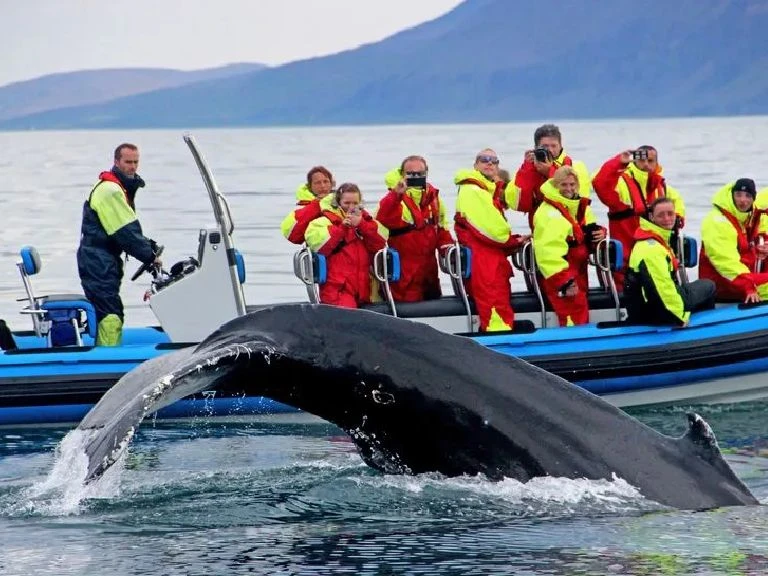
Whale watching in Iceland is an awe-inspiring experience that allows you to witness some of the ocean’s most magnificent creatures in their natural habitat. Iceland’s rich marine life and stunning coastal scenery make it one of the premier destinations for whale watching in the world.
Husavik: The Whale-Watching Capital Husavik, often referred to as the whale-watching capital of Iceland, is a charming town located on the north coast. The waters around Husavik are teeming with marine life, making it an ideal spot for whale watching. Several species of whales can be spotted here, including humpback whales, minke whales, and sometimes even the majestic blue whale.
Reykjavik Whale Watching For those based in Reykjavik, there are plenty of whale-watching tours departing from the city’s old harbor. These tours offer the chance to see a variety of whale species as well as other marine life, such as dolphins and seabirds, against the backdrop of Reykjavik’s stunning coastline and distant mountains.
What to Expect on a Whale-Watching Tour Most whale-watching tours last about 3-4 hours and are led by experienced guides who provide informative commentary about the whales and other marine life you encounter. Boats are equipped with observation decks that offer great views and opportunities for photography. It’s advisable to dress warmly, as it can get chilly out on the open water, even in summer.
Types of Whales You Might See
- Humpback Whales: Known for their acrobatic breaches and distinctive tail flukes, humpback whales are a favorite among whale watchers.
- Minke Whales: These smaller whales are often curious and may approach boats, providing close-up viewing opportunities.
- Blue Whales: The largest animals on the planet, blue whales are occasionally spotted in Icelandic waters, and seeing one is a rare and unforgettable experience.
- Orcas (Killer Whales): Though less common, orcas can sometimes be seen, particularly around the Snaefellsnes Peninsula.
Tips for a Successful Whale-Watching Experience
- Book in Advance: Whale-watching tours are popular, especially in the summer months, so it’s a good idea to book your tour in advance.
- Bring Binoculars: While the whales often come close to the boats, binoculars can help you spot them from a distance.
- Stay Warm and Dry: Dress in layers and bring waterproof clothing, as the weather can change quickly, and it can be wet and windy on the water.
- Listen to the Guides: The guides are experts at spotting whales and will direct your attention to where the action is. Their knowledge enhances the overall experience.
Taking a whale-watching tour in Iceland is a thrilling and educational adventure that offers a unique glimpse into the lives of these incredible marine mammals. The combination of beautiful coastal scenery and the chance to see whales up close makes it an unforgettable highlight of any trip to Iceland.
Also Read: Top 20 best things to do in Mexico City 2024
Explore the Snæfellsnes Peninsula
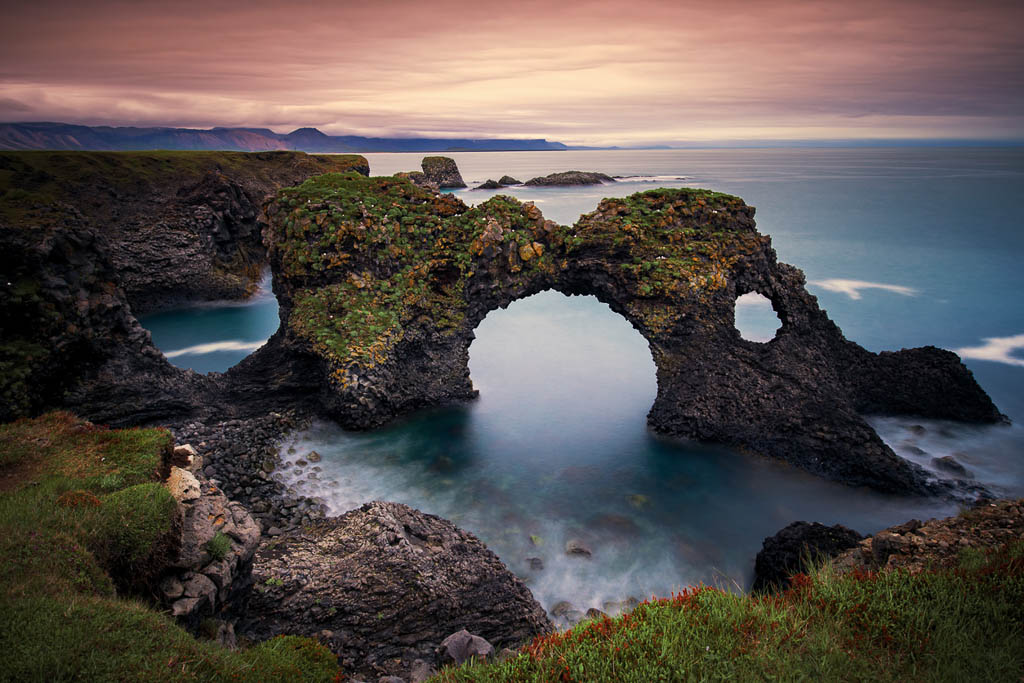
The Snæfellsnes Peninsula, often referred to as “Iceland in Miniature,” offers a diverse and breathtaking array of landscapes, from rugged coastlines and volcanic craters to charming fishing villages and the iconic Snæfellsjökull glacier. This peninsula, located in western Iceland, provides a condensed version of the country’s most stunning natural features.
Snæfellsjökull National Park At the heart of the peninsula lies Snæfellsjökull National Park, home to the majestic Snæfellsjökull glacier, a 700,000-year-old stratovolcano with a glacier at its peak. This glacier gained fame through Jules Verne’s novel “Journey to the Center of the Earth” as the entrance to the earth’s core. On clear days, you can see the glacier from Reykjavik, over 120 kilometers away. The park offers numerous hiking trails, allowing you to explore lava fields, craters, and caves.
Kirkjufell Mountain Kirkjufell, often called the most photographed mountain in Iceland, is a distinctive peak near the town of Grundarfjörður. Its unique, conical shape and the nearby Kirkjufellsfoss waterfall make for a stunning photo opportunity, especially during sunset or the Northern Lights. The mountain is also a popular spot for hiking and nature walks.
Arnarstapi and Hellnar The coastal villages of Arnarstapi and Hellnar are known for their dramatic cliffs, basalt formations, and rich birdlife. A walking trail connects the two villages, offering spectacular views of the rugged coastline and sea stacks. Arnarstapi’s Gatklettur, a natural arch rock formation, and Hellnar’s scenic harbor are must-see spots along the route.
Djupalonssandur Black Sand Beach Djupalonssandur is a beautiful black sand beach with striking rock formations and smooth, black pebbles known as Djúpalónsperlur (Pearls of Djúpalón). The beach is also home to the remnants of a British trawler that wrecked here in 1948, adding a touch of history to the natural beauty. Nearby, you’ll find the lifting stones that were once used to test the strength of local fishermen.
Stykkishólmur Stykkishólmur is a picturesque fishing town on the northern side of the peninsula, known for its colorful houses, historic buildings, and vibrant harbor. Visit the Volcano Museum to learn about Iceland’s volcanic activity or take a boat tour around Breiðafjörður Bay, famous for its myriad of islands and rich marine life, including puffins and seals.
Berserkjahraun Lava Field Berserkjahraun is an expansive lava field created by a volcanic eruption around 3,600 years ago. According to legend, it is named after two Swedish “berserkers” who cleared a path through the rugged terrain. The lava field’s moss-covered rocks and twisted lava formations create an otherworldly landscape perfect for hiking and exploration.
Tips for Exploring Snæfellsnes Peninsula
- Plan a Full Day: There’s so much to see and do on the peninsula that you’ll want to dedicate a full day, or even two, to explore it thoroughly.
- Rent a Car: The best way to explore Snæfellsnes is by car, giving you the freedom to stop at various sites and take in the scenery at your own pace.
- Weather Preparedness: The weather on the peninsula can be unpredictable, so dress in layers and be prepared for changing conditions.
Exploring the Snæfellsnes Peninsula offers a condensed yet incredibly diverse Icelandic experience, showcasing everything from glaciers and volcanoes to quaint villages and dramatic coastlines. It’s a destination that truly captures the essence of Iceland’s natural beauty and geological wonders.
